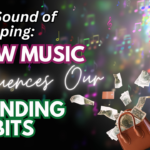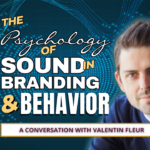How to Improve Your Podcast Audio to Engage Listeners: A Conversation with Chris Stone – Part 2 “People are actually tuning in from their phones or, like, listening on Spotify or whatever while they’re shopping. And they actually measured how conscious people were of what they were spending. So yeah, it’s just really fascinating. It […]
soundscapes
The Sound of Shopping: How Music Influences Our Spending Habits
The Sound of Shopping: How Music Influences Our Spending Habits When you think about shopping, what sound comes to mind? It might be the carts rolling up and down the aisles, or maybe the beeps of the scanners when you’re standing in the check-out line. Music might not be the first thing that crosses our […]
The Psychology of Sound in Branding and Behavior: A Conversation with Valentin Fleur – Part 1
The Psychology of Sound in Branding and Behavior: A Conversation with Valentin Fleur – Part 1 “I think, right now, I’ve noticed kind of two opposite trends. I don’t know if they’re opposite, but they’re very, very different. On one hand, I feel like my clients, my clients, they want to talk to their audiences […]
Exploring the Unheard: A Conversation with Andrea Cera – Part 2
Exploring the Unheard: A Conversation with Andrea Cera – Part 2 “Also, because nobody listened to these sounds, even the nurse that should be paying attention. They really, they got used to this kind of droning sensation.” “You have to tune it out.” “Yes, yes, and imagine the mental load to do that, to tune […]
In the Clubhouse: The Alarms in Hospitals are Killing Us – Part 2
“We go through all these things and talk about all these problems with annoying sounds and how important it is for the bellows sounds to be informative. And all this just hearkens back to the point where the essential goal here of these so-called auditory ‘alarms’ isn’t to alarm, it’s to notify. And I think […]
In the Clubhouse: The Alarms in Hospitals are Killing Us – Part 1
“Persuading hospitals and manufacturers to adopt better alarms aside from the standard is to persuade them that this is important and that it’s cool to do so, and that this is what everybody is doing and it’s a selling point for you if you’re using better alarms or more safe alarms or your false alarm […]





